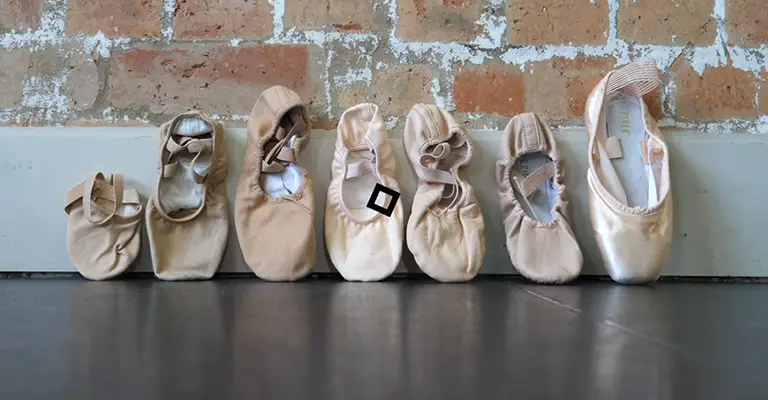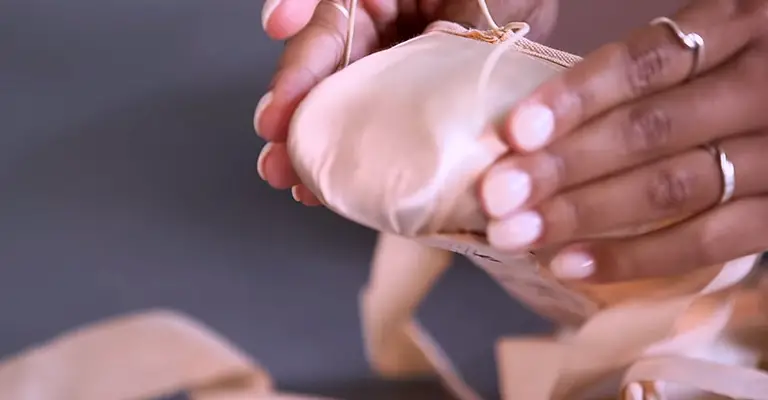What type of ballet shoe is perfect for your dancer?
There are different types of ballet shoes for the dancer. But all shoes are not appropriate for all of the dancers. The shoes vary depending on the moves and experience of the dancers.
If you do not get comfortable and supportive ballet shoes then it will be difficult for you to perform the moves.

3 Types Of Ballet Shoes Including Their Pros And Cons
This article will help you to know the types of ballet shoes with the pros and cons so that you can understand which one is suitable for you.
3 Types Of Ballet Shoes
There are three different kinds of ballet shoes for dancers. they have different advantages and disadvantages.
- Split Shoes
- Full Sole Shoe
- Pointe Shoe
Examine all the things and select your shoe.
Split Shoes
A split shoe is designed with their shoes in two sections. Usually, a split sole shoe has a heel pad and a toe pad. To provide traction it is often made from rough material.
The center of the shoe does not contain a sole, the bottom of the sole made of soft material to protect the foot.
Split shoes are sold in dance boutiques. Split sole shoes can be used in ballet, clogging and jazz dance. As the split shoes are flexible to use and there is less opportunity to get injured, the dance instructor instructs them to buy a split shoe.
Some people who work outdoors also like to wear split shoes. The rock climbers and hunters wear the shoes because they want to feel more of a connection with the terrain that they traverse.
This shoe is a quieter shoe that does not produce any sound and it is very helpful for the hunters because they do not want to disturb their prey.
- It is more flexible to use
- This shoe is considered a quieter shoe
- It is comfortable to point the foot and to get traction on difficult surfaces
- It can make a connection with the ground that some people find useful.
- Not ideal for prolonged outdoor
- Less arch support than the other shoes
Full Sole Shoe
A full sole shoe has the sole running the full length of the shoe. These shoes are very supportive of the new dancers. Not only the new dancers but also some ballerinas, even experienced ones prefer the full sole shoes for added support.
Dance instructors recommended these shoes for the dancers those who are primarily for students between the age of 4 and 7.
This shoe is recommended for them because it offers more traction all around and offers more resistance as well.
- The resistance of the shoe help early dancers to build strength
- It is flexible and comfortable
- It manipulates the entire length of the foot
- It is a lightweight shoe
- It is not appropriate for the advance dancer
Pointe Shoe
Pointe shoe is mainly recommended for those who are ballet dancers and they wear the point shoe when performing point work. These types of shoes were mainly worn by highly experienced ballerinas. They are designed to provide support to the feet and ankles of the dancers.
These shoes are fitted amazingly with the feet that help ballerinas do all their moves on point.
Pointe shoes provide support when the dancers perform their stance.
The main purpose of the shoe is to help the experienced dancers appear weightless while dancing. Your dance will indeed be perfect if you can contain the balance and dance on the tips of your toes and all these tales years of practice.
Pointe shoes help to make it easier. Three main parts of the point shoe can be seen and they are the ribbons, shank, and box. They are manufactured in a variety of colors, but most of the point shoes are pink there are different shades in pink from darker nudes to light pink.

- It is a comfortable shoe
- This shoe works as a great support
- Help to make balance
- Different types of colors are available
- It is recommended for the expert dancer
For more details let’s check a video to find out more information about ballet shoes
Conclusion
This article will help you to know the types of ballet shoes and you are also able to select the perfect shoe for you by considering your dance movements. If you do not understand which one is appropriate for you, then you can take help from your teacher.
Your instructor can help you know what kind of shoes you need.
